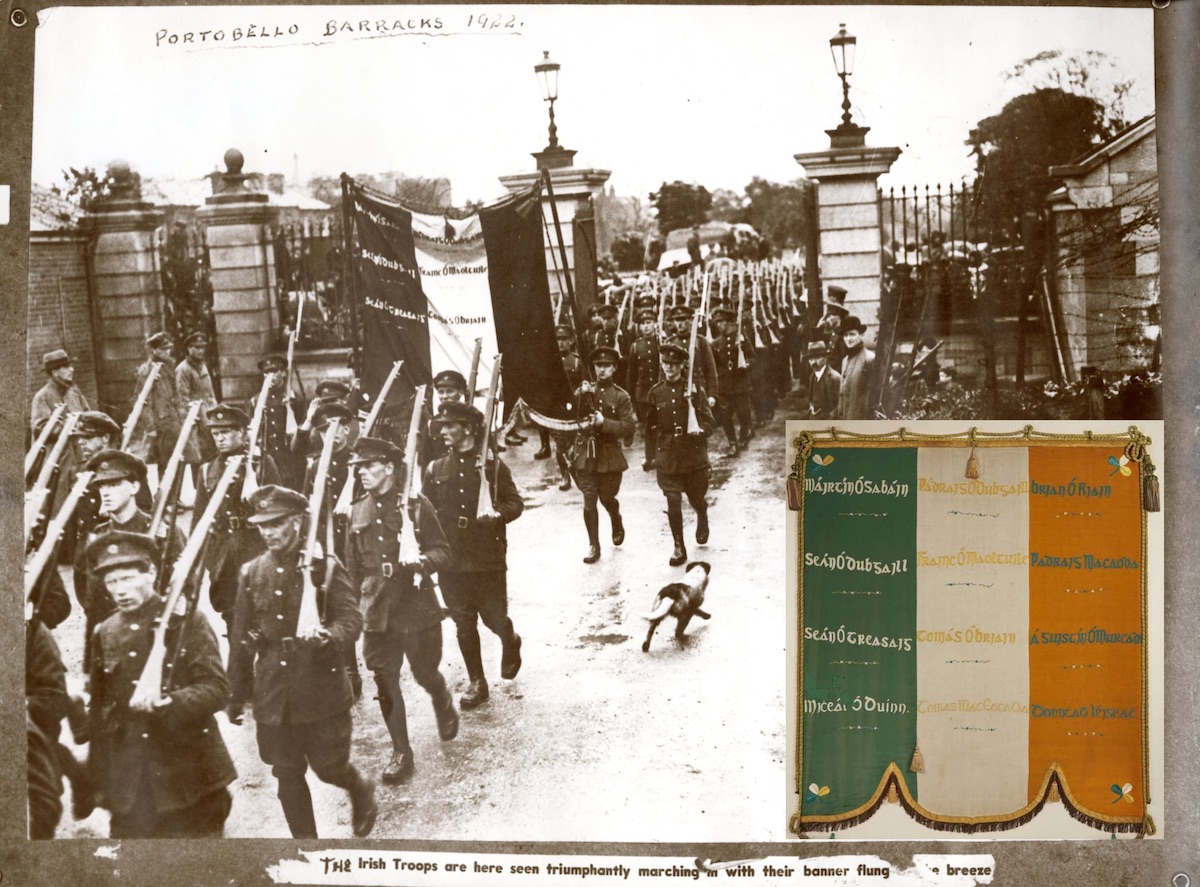
An exhibition centred on a unique banner has opened in Kilmainham Gaol Museum in Dublin.
On 17 May 1922, troops from the newly-formed National Army of the Irish Free State took possession of Portobello Barracks. This was a hugely symbolic event, as it was one of the last barracks surrendered to the Irish Free State Government by the British Army under the terms of the Anglo-Irish Treaty, signed the previous December.
As they passed through the gates, the Irish soldiers carried aloft a tricolour banner, ‘The Banner of the Patriots’, embroidered with the names of nine of their comrades killed during the War of Independence. The Freeman’s Journal reported that this banner added a “note of poignant impressiveness” to the Irish soldiers’ march to Portobello.
It featured prominently again on 25 May when a detachment of Irish Army soldiers from Portobello Barracks marched through the streets of Dublin to attend a memorial mass held in St. Agatha’s Church on North William Street. The mass was arranged to mark the anniversary of those who had died in the attack on the Custom House the previous year.
The ceremonies performed by the Free State Army in Portobello Barracks and St. Agatha’s Church took place against the backdrop of escalating tensions within the Irish independence movement, which had split over the signing of the Anglo-Irish Treaty the previous year. This division ultimately resulted in all-out Civil War in late June.
Tragically, this meant there were soon more names to add to the banner. Tom Kehoe was killed by a mine planted by Anti-Treaty forces in Carrigaphoca, County Cork, on 16 September 1922. Michael Dunne was killed by booby-trap bomb on 6 March 1923 in Knocknagoshel, County Kerry.
Surprisingly, the final name added was not a Free State soldier.
Denis ‘Dinny’ Lacey was an anti-Treaty Republican and was shot dead by Free State soldiers in Ballydavid, Co. Tipperary, on 18 February 1923 while trying to evade capture.
Why his name was included on the banner is not known. Perhaps it was a gesture of reconciliation or a recognition of the shared losses of the Civil War.
An exhibition centred on the unique banner has opened in Kilmainham Gaol Museum in Dublin. The exhibition also features several objects and letters connected with the men whose names appear on the banner. Admission to the Museum is free.
![[Irish Republican News]](https://republican-news.org/graphics/title_gifs/rn.gif)
![[Irish Republican News]](https://republican-news.org/graphics/title_gifs/harp.gif)

